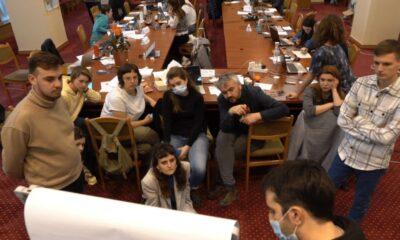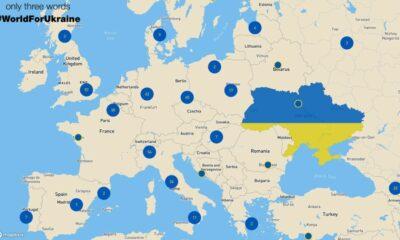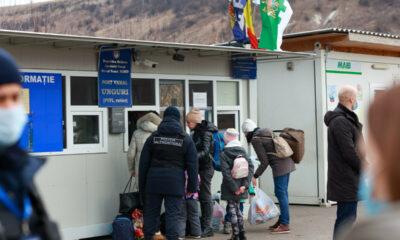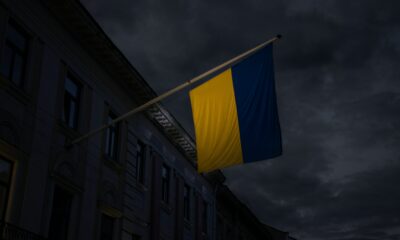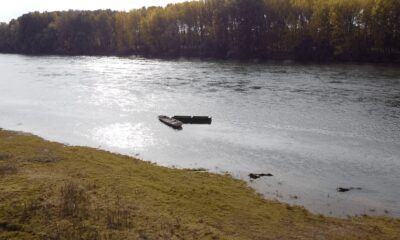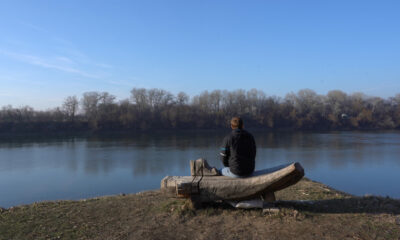Society
Viewpoint: Japan plant – who is in charge?
Reading Time: 4 minutes Despite efforts by Tokyo Electric Power Companys (Tepco) engineers, the Self-Defence Forces, police and firemen, conditions there appear to have grown steadily worse.
As Japan works to recover from its greatest natural disaster in modern times, attention remains focused on the evolving situation at the crippled Fukushima Daiichi nuclear power plant.
Despite efforts by Tokyo Electric Power Company’s (Tepco) engineers, the Self-Defence Forces, police and firemen, conditions there appear to have grown steadily worse.
On 1 April, Prime Minister Naoto Kan admitted that the plant had not yet been "sufficiently stabilised", acknowledging it would be a "long-term battle".
Since the beginning, one of the unanswered questions has been: "Who is in charge?"
A Japanese law laying out measures to be taken by the government in case of a nuclear energy disaster dictates that when a nuclear accident happens, an atomic power disaster response headquarters headed by the prime minister is to be established.
This ad hoc headquarters is expected to take charge of setting out the government’s response and facilitating necessary inter-agency co-ordination within the government.
As the head of the disaster response headquarters, the prime minister has the authority to direct relevant government agencies as well as private companies that are involved in responding to the disaster.
He has two entities from which to draw expert opinions to assist him in decision-making: the Nuclear and Industrial Safety Agency (Nisa, an agency within the Ministry of Economy, Industry and Trade (Meti)) and the Nuclear Safety Commission, an advisory panel made up of non-government experts.
So, legally speaking, the prime minister of Japan is in charge. Or he is supposed to be.
Advisers
So what of Mr Kan’s leadership to date? On the one hand, it has been clear that he wants to appear in charge: he wanted to "speak directly to the Japanese people" in the immediate aftermath of the earthquake.
He issued a press statement immediately after the disaster, and so far has made five televised addresses, most recently on 25 March. Four days after the quake, amid confusion over the situation at the plant, he was overheard by journalists asking Tepco executives: "What the hell is going on?"
Demonstrating his distrust in Tepco and Meti, he has appointed a number of non-government experts in addition to those who are already in advisory roles. As of 29 March, 5 out of 15 advisers were appointed specifically to advise on the situation at the plant.
Yet despite his efforts, as more time passes he appears less in charge. In terms of media questions, he has for the most part left the top government spokesman, Chief Cabinet Secretary Yukio Edano, and Tepco executives in the hot seat.
Too many advisers around Mr Kan have created confusion in the communication process within government, making it harder, not easier, for him to make decisions.
Instead, we have witnessed finger-pointing, primarily at Tepco and also at Nisa. In fact, the idea of separating Nisa from Meti and making it an independent agency has already been floated as one of the lessons learned from the situation.
This is because the Kan government feels that Meti has been in too cosy a relationship with Tepco – to the extent that it has not exercised proper supervisory authority over the power giant and its response to the plant situation.
‘Too big to fail’
Certainly, Tepco deserves the criticism that it has been receiving. For one thing, Tepco does not have a good record of managing nuclear accidents. Its responses to previous incidents have been severely criticised as "tardy" and "not forthcoming with timely information".
In 2002 it was also revealed that Tepco had been forging safety inspection records of some of its nuclear power plants. This time, Tepco has been severely criticised as it may have underestimated the gravity of the situation in the first several days.
In addition, it has been castigated by the government for not only not being forthcoming with critical radiation information, but also providing incorrect radiation readings from the plant.
As a power company with a monopoly in providing electricity to Tokyo and eight prefectures in eastern Japan, no one can deny that Tepco has been plagued with a "We are too big to fail" mentality, making it less proactive about emergency planning.
The decades-long tradition of close co-operation between big businesses and the government agencies that have regulatory and supervisory authority over them has certainly contributed to lapses in oversight.
It also, in part, has made the government dependent on these businesses for technical expertise.
Shut out
That said, Mr Kan’s performance in responding to the accident at the plant is also illustrative of the fundamental problem in the governance style of his Democratic Party of Japan (DPJ).
The DPJ-led government was elected in August 2009, ending more than five decades of almost unbroken rule by the Liberal Democratic Party (LDP).
Even before this crisis hit, the DPJ’s insistence on "leadership by politicians" – compared to the consensus, bottom-up style adopted by the LDP – had created problems.
The DPJ’s deep mistrust in the bureaucracy has driven them to go outside existing government frameworks to look for solutions rather than attempting to effectively utilise the bureaucracy.
By alienating the bureaucracy in the decision-making process, the relationship between DPJ political leaders and the bureaucrats has been greatly soured. Its approach also prevented the DPJ from learning how to maximise bureaucrats’ policy and technical expertise.
Given that the magnitude of the disaster that Mr Kan and his government face is unprecedented, there is no guarantee that an LDP government would have been able to respond to the crisis any better.
Even so, Mr Kan’s instinct to look outside the government for counsel without tapping into the knowledge of the bureaucracy has created a situation in which he has essentially excluded the bureaucrats as a source of information.
This is critically disadvantageous, as the prime minister’s chosen advisers – despite being experts in their field – will not have the same level of on-the-ground information.
Without better utilising the expertise that already exists in the bureaucracy, we will continue to see Mr Kan and his government fall behind the curve in its response.
Society
“They are not needy, but they need help”. How Moldovan volunteers try to create a safe environment for the Ukrainian refugees
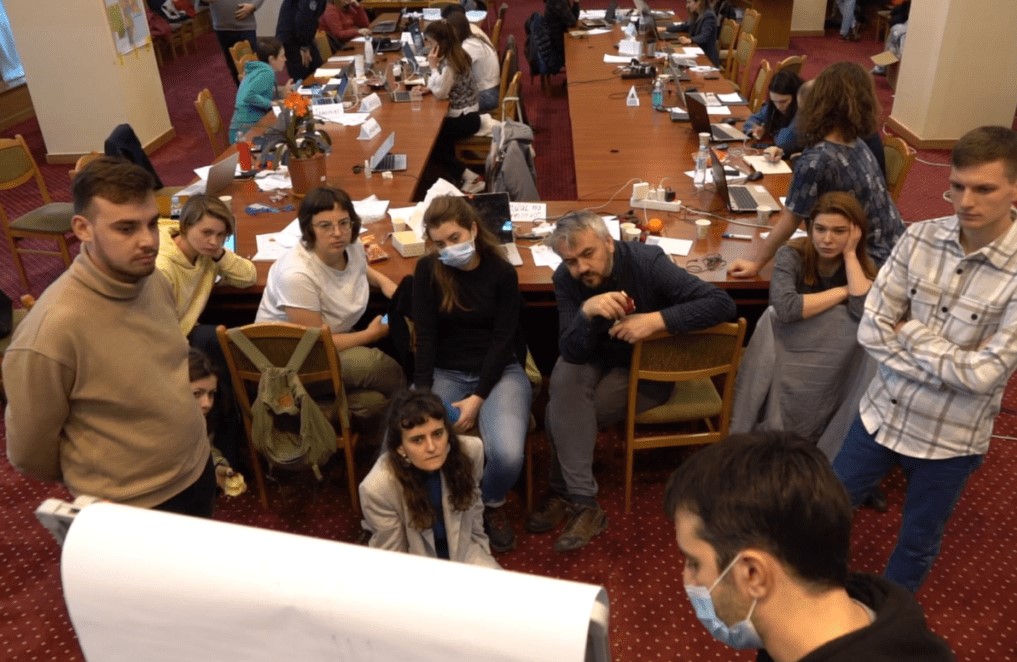
At the Government’s ground floor, the phones ring constantly, the laptop screens never reach standby. In one corner of the room there is a logistics planning meeting, someone has a call on Zoom with partners and donors, someone else finally managed to take a cookie and make some coffee. Everyone is exhausted and have sleepy red eyes, but the volunteers still have a lot of energy and dedication to help in creating a safe place for the Ukrainian refugees.
“It’s like a continuous bustle just so you won’t read the news. You get home sometimes and you don’t have time for news, and that somehow helps. It’s a kind of solidarity and mutual support,” says Vlada Ciobanu, volunteer responsible for communication and fundraising.
The volunteers group was formed from the very first day of war. A Facebook page was created, where all types of messages immediately started to flow: “I offer accommodation”, “I want to help”, “I want to get involved”, “Where can I bring the products?”, “I have a car and I can go to the customs”. Soon, the authorities also started asking for volunteers’ support. Now they all work together, coordinate activities and try to find solutions to the most difficult problems.
Is accommodation needed for 10, 200 or 800 people? Do you need transportation to the customs? Does anyone want to deliver 3 tons of apples and does not know where? Do you need medicine or mobile toilets? All these questions require prompt answers and actions. Blankets, sheets, diapers, hygiene products, food, clothes – people bring everything, and someone needs to quickly find ways of delivering them to those who need them.
Sometimes this collaboration is difficult, involves a lot of bureaucracy, and it can be difficult to get answers on time. “Republic of Moldova has never faced such a large influx of refugees and, probably because nobody thought this could happen, a mechanism of this kind of crisis has not been developed. Due to the absence of such a mechanism that the state should have created, we, the volunteers, intervened and tried to help in a practical way for the spontaneous and on the sport solutions of the problems,” mentions Ecaterina Luțișina, volunteer responsible for the refugees’ accommodation.
Ana Maria Popa, one of the founders of the group “Help Ukrainians in Moldova/SOS Українці Молдовa” says that the toughest thing is to find time and have a clear mind in managing different procedures, although things still happen somehow naturally. Everyone is ready to intervene and help, to take on more responsibilities and to act immediately when needed. The biggest challenges arise when it is necessary to accommodate large families, people with special needs, for which alternative solutions must be identified.
Goods and donations
The volunteers try to cope with the high flow of requests for both accommodation and products of all kinds. “It came to me as a shock and a panic when I found out that both mothers who are now in Ukraine, as well as those who found refuge in our country are losing their milk because of stress. We are trying to fill an enormous need for milk powder, for which the demand is high and the stocks are decreasing”, says Steliana, the volunteer responsible for the distribution of goods from the donation centers.
Several centers have been set up to collect donations in all regions of Chisinau, and volunteers are redirecting the goods to where the refugees are. A system for processing and monitoring donations has already been established, while the volunteer drivers take over the order only according to a unique code.
Volunteers from the collection centers also do the inventory – the donated goods and the distributed goods. The rest is transported to Vatra deposit, from where it is distributed to the placement centers where more than 50 refugees are housed.
When they want to donate goods, but they don’t know what would be needed, people are urged to put themselves in the position of refugees and ask themselves what would they need most if they wake up overnight and have to hurriedly pack their bags and run away. Steliana wants to emphasise that “these people are not needy, but these people need help. They did not choose to end up in this situation.”
Furthermore, the volunteer Cristina Sîrbu seeks to identify producers and negotiate prices for products needed by refugees, thus mediating the procurement process for NGOs with which she collaborates, such as Caritas, World Children’s Fund, Polish Solidarity Fund, Lifting hands, Peace Corps and others.
One of the challenges she is facing now is the identifying a mattress manufacturer in the West, because the Moldovan mattress manufacturer that has been helping so far no longer has polyurethane, a raw material usually imported from Russia and Ukraine.
Cristina also needs to find solutions for the needs of the volunteer groups – phones, laptops, gsm connection and internet for a good carrying out of activities.
Hate messages
The most difficult thing for the communication team is to manage the hate messages on the social networks, which started to appear more often. “Even if there is some sort of dissatisfaction from the Ukrainian refugees and those who offer help, we live now in a very diverse society, there are different kind of people, and we act very differently under stress,” said Vlada Ciobanu.
Translation by Cătălina Bîrsanu
Important
#WorldForUkraine – a map that shows the magnitude of the world’s actions against Russian aggression

The international community and volunteers from all over te world have launched #WorldForUkraine as a platform that shows the magnitude of the world’s actions against the Russian aggression. In a digital world – it is an interactive map of public support of Ukrainians under the hashtag #WorldForUkraine – rallies, flash mobs, protests around the world. In the physical dimension – it is your opportunity to take to the streets and declare: “No to Putin’s aggression, no to war.”
„Today, along with the political and military support, emotional connection with the civilized world and truthful information are extremely important for Ukraine. The power to do it is in your hands. Join the #WorldForUkraine project and contribute to the victorious battle against the bloodshed inflicted on Ukraine by the aggression of the Russian Federation”, says the „about the project” section of the platform.
Go to the streets — Tell people — Connect and Unite — Become POWERFUL
Volunteers have launched #WorldForUkraine as a platform that shows the magnitude of the world’s actions against Russian aggression. In digital world – it is an INTERACTIVE MAP of public support of Ukrainians worldforukraine.net under the hashtag #WorldForUkraine – rallies, flash mobs, protests around the world. In the physical dimension – it is your opportunity to take to the streets and declare: “No to Putin’s aggression, no to war.” There you may find information about past and future rallies in your city in support of Ukraine. This is a permanent platform for Ukrainian diaspora and people all over the world concerned about the situation in Ukraine.
So here’s a couple of things you could do yourself to help:
* if there is a political rally in your city, then participate in it and write about it on social media with geolocation and the hashtag #WorldForUkraine
* if there are no rallies nearby, organize one in support of Ukraine yourself, write about it on social media with geolocation adding the hashtag #WorldForUkraine
The map will add information about gathering by #WorldForUkraine AUTOMATICALLY
Your voice now stronger THAN ever
All rallies are already here: https://worldforukraine.net
Important
How is Moldova managing the big influx of Ukrainian refugees? The authorities’ plan, explained
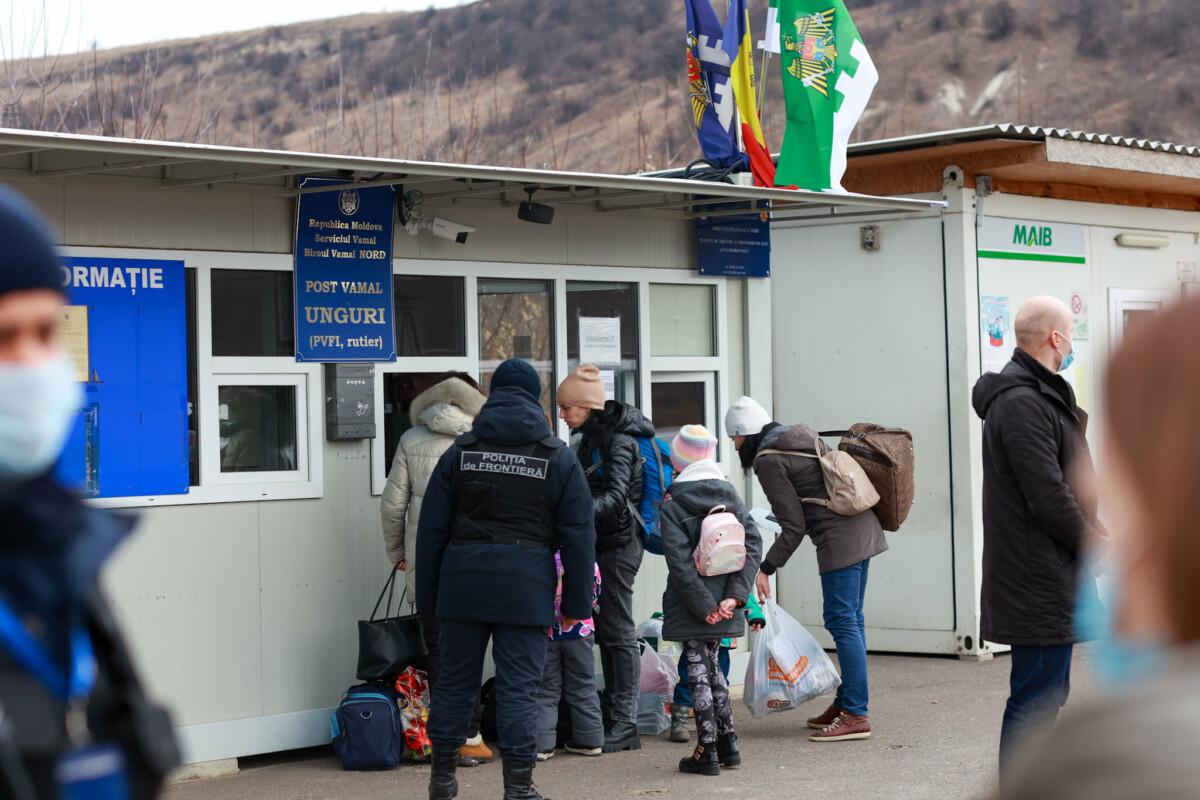
From 24th to 28th of February, 71 359 Ukrainian citizens entered the territory of Republic of Moldova. 33 173 of them left the country. As of this moment, there are 38 186 Ukrainian citizens in Moldova, who have arrived over the past 100 hours.
The Moldovan people and authorities have organized themselves quickly from the first day of war between Russia and Ukraine. However, in the event of a prolonged armed conflict and a continuous influx of Ukrainian refugees, the efforts and donations need to be efficiently managed. Thus, we inquired about Moldova’s long-term plan and the state’s capacity to receive, host, and treat a bigger number of refugees.
On February 26th, the Ministry of Labor and Social Protection of Moldova approved the Regulation of organization and functioning of the temporary Placement Center for refugees and the staffing and expenditure rules. According to the Regulation, the Centers will have the capacity of temporary hosting and feeding at least 20 persons, for a maximum of 3 months, with the possibility of extending this period. The Centers will also offer legal, social, psychological, and primary medical consultations to the refugees. The Center’s activity will be financed from budget allocations, under Article 19 of Provision no. 1 of the Exceptional Situations Commission from February 24th, 2022, and from other sources of funding that do not contravene applicable law.
The Ministry of Inner Affairs and the Government of Moldova facilitated the organization of the volunteers’ group “Moldova for Peace”. Its purpose is to receive, offer assistance and accommodation to the Ukrainian refugees. The group is still working on creating a structure, registering and contacting volunteers, etc. It does not activate under a legal umbrella.
Lilia Nenescu, one of the “Moldova for Peace” volunteers, said that the group consists of over 20 people. Other 1700 registered to volunteer by filling in this form, which is still available. The group consists of several departments:
The volunteers’ department. Its members act as fixers: they’re responsible for connecting the people in need of assistance with the appropriate department. Some of the volunteers are located in the customs points. “The Ministry of Inner Affairs sends us every day the list of the customs points where our assistance is needed, and we mobilize the volunteers”, says Lilia Nenescu.
The Goods Department manages all the goods donated by the Moldavian citizens. The donations are separated into categories: non-perishable foods and non-food supplies. The volunteers of this department sort the goods into packages to be distributed.
The Government intends to collect all the donations in four locations. The National Agency for Food Safety and the National Agency for Public Health will ensure mechanisms to confirm that all the deposited goods comply with safety and quality regulations.
The Service Department operates in 4 directions and needs the volunteer involvement of specialists in psychology, legal assistance (the majority of the refugees only have Ukrainian ID and birth certificates of their children); medical assistance; translation (a part of the refugees are not Ukrainian citizens).
According to Elena Mudrîi, the spokesperson of the Ministry of Health, so far there is no data about the number of Covid-19 positive refugees. She only mentioned two cases that needed outpatient medical assistance: a pregnant woman and the mother of a 4-day-old child.
The Accommodation Department. The volunteers are waiting for the centralized and updated information from the Ministry of Labor about the institutions offering accommodation, besides the houses offered by individuals.
The Transport Department consists of drivers organized in groups. They receive notifications about the number of people who need transportation from the customs points to the asylum centers for refugees.
The municipal authorities of Chișinău announced that the Ukrainian children refugees from the capital city will be enrolled in educational institutions. The authorities also intend to create Day-Care Centers for children, where they will be engaged in educational activities and will receive psychological assistance. Besides, the refugees from the municipal temporary accommodation centers receive individual and group counseling.
In addition to this effort, a group of volunteers consisting of Ana Gurău, Ana Popapa, and Andrei Lutenco developed, with the help of Cristian Coșneanu, the UArefugees platform, synchronized with the responses from this form. On the first day, 943 people offered their help using the form, and 110 people asked for help. According to Anna Gurău, the volunteers communicate with the Government in order to update the platform with the missing data.
Translation from Romanian by Natalia Graur


